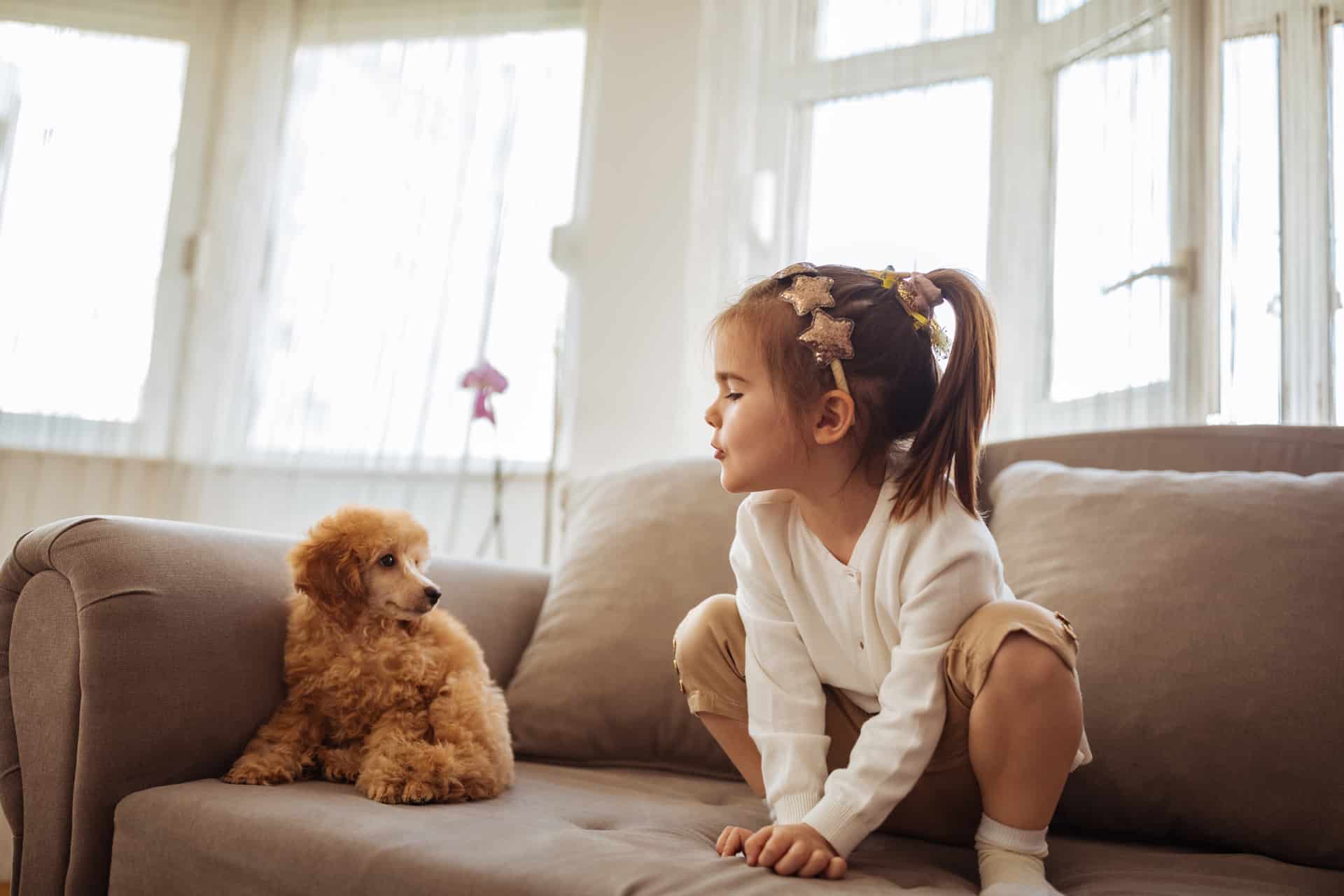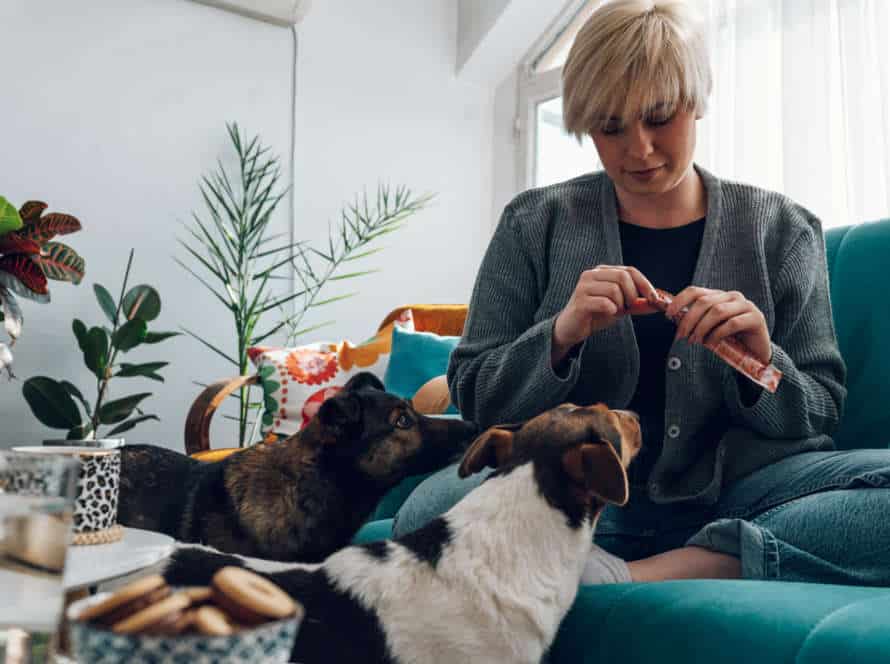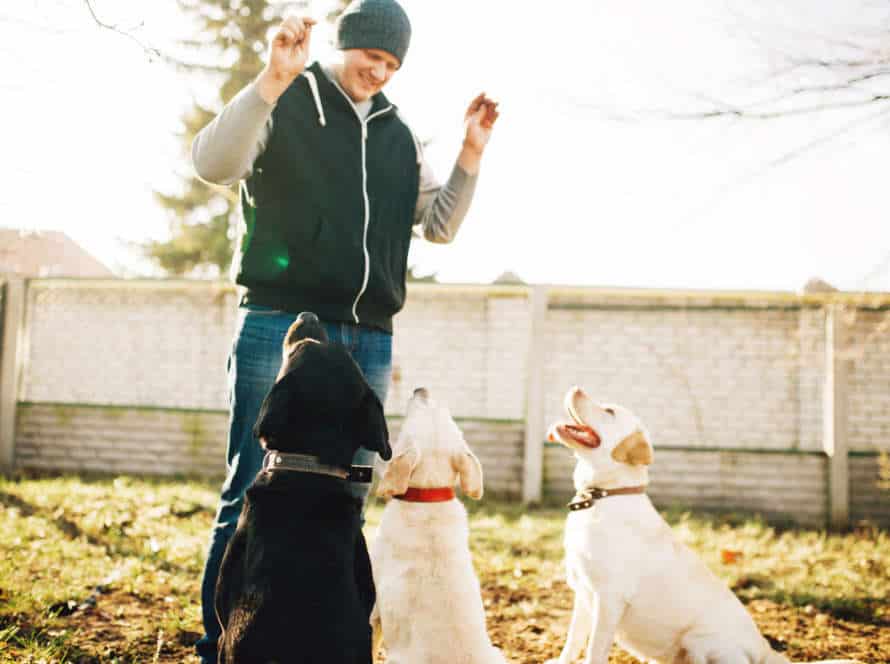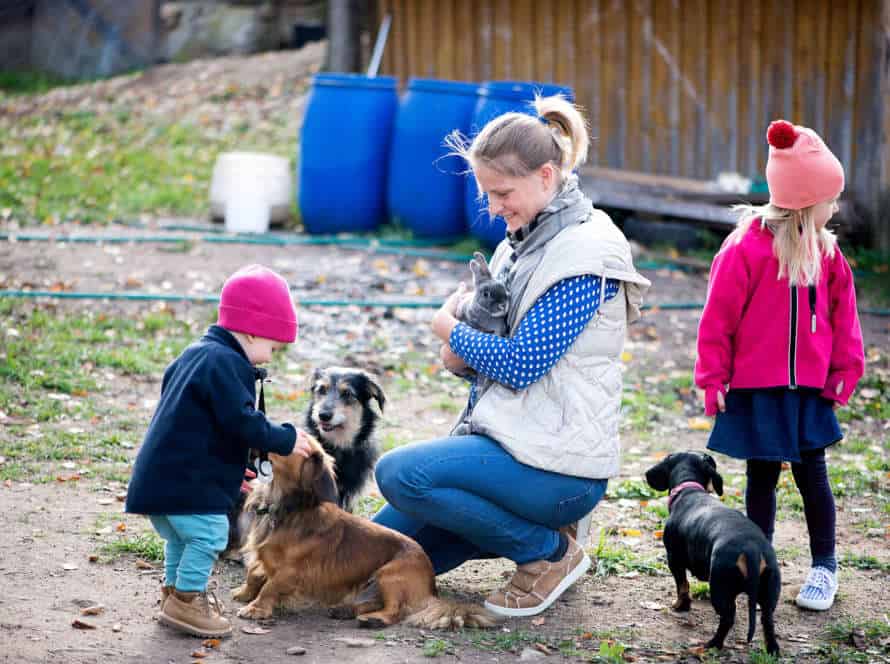Understanding Shyness in Puppies
Puppies can be shy and scared. It’s vital to understand this. Knowing why they act this way helps us help them. This article covers signs of a timid pup, factors that make them anxious, and how to make them feel better.
Reasons why puppies may be shy
Sometimes, puppies can be shy. It’s common! There are several causes. For example:
- Genetics: Some breeds are naturally more timid and this can be passed down.
- Lack of socialization: If they haven’t been around a lot of people, animals, or new places, they might be scared.
- Traumatic experiences: If they’ve been abused or neglected, shyness may follow.
- Health issues: When puppies are ill or in pain, it can make them shy.
- Environmental factors: Loud noises or chaotic living can cause shyness too.
To help your puppy, figure out the root of their shyness first. Then, use slow exposure, positive reinforcement, and gentle training. This will help them gain confidence!
Different types of shyness in puppies
Puppies can be shy, just like us humans! It’s important to know the different types of shyness they can show. Here are some to watch out for:
- Situational shyness: Fear of certain situations, like new environments or loud noises.
- Genetic shyness: Natural shyness, avoiding people and other animals.
- Learning shyness: From past experiences like neglect or abuse.
- Trauma-induced shyness: Fear from a traumatic event.
It’s important to remember that each puppy may have a different type of shyness. Knowing the cause and effects of shyness can help you develop a plan to overcome fear.
Pro Tip: Show patience with your shy puppy. Gradually expose them to things that cause fear.
Identifying signs of shyness in puppies
Identifying signs of shyness in puppies? Look for body language, behavior and interactions. Common signs: avoiding eye contact, tail tucked, trembling, cowering, drooling, panting, licking, biting, whimpering and growling. Why? Genetics, lack of socialization, trauma or medical conditions.
Help them overcome fear? Provide a safe, positive environment. Gradually expose them to new experiences. Train them with positive reinforcement. Seek professional help if needed.
Pro tip: Give love and patience. Don’t force into uncomfortable situations. With time and gentle guidance, they can become confident and happy dogs.
Strategies for Helping a Shy Puppy Overcome Fear
A shy puppy can be both rewarding and frustrating. Patience and understanding are key to transforming a timid pup into a confident, outgoing pet. Here, we’ll look at some strategies to help your shy puppy conquer fear and reach their full potential.
Socialization Techniques for Shy Puppies
Socializing is essential for a puppy’s growth. But, some pups may be timid and need extra help. Below are 3 strategies to assist a shy pup in conquering fear:
- Positive reinforcement – Use treats, toys, and compliments to reward your pup for good behavior, like approaching people or dogs. This builds confidence and creates positive feelings towards new experiences.
- Gradual exposure – Introduce your pup to new people, environments, and dogs one at a time. Start with low-stress scenarios, then work up to more difficult ones.
- Get aid from a pro – A dog trainer or behaviorist can create a personalized plan and give tools/techniques to help a shy pup. Patience and consistency are vital.
Pro Tip: Start socializing early. The “critical period” is 3-14 weeks of age.
Gradual exposure to new environments, people, and pets
Help a shy puppy conquer fear and anxiety with incremental exposure to new people, places, and animals! Here are some tips:
- Introduce your pup to new people in a relaxed setting.
- Expose them to unfamiliar sounds and sensations bit by bit.
- Reward good behavior with treats and compliments.
- Provide a secure area and a predictable routine.
- Be consistent and patient. Progress will be slow, but your pup can learn to confront its trepidations and become a lively, outgoing pup!
Pro tip: Regularity is crucial! Abide by a regular schedule and be patient – your timid pup will get used to it with step-by-step exposure and encouragement.
Positive reinforcement training
Positive reinforcement training is an effective way to help your shy pup conquer fear and build confidence. Here are some tips:
- Start small – Show your shy pup new experiences in brief, achievable chunks.
- Reward good behavior – Use positive reinforcement techniques, like verbal praise, petting or treats, to reward bravery or curiosity.
- Set realistic goals – Don’t push your pup too far. Move at their pace.
- Be patient & consistent – Training takes time. Remain patient, calm and consistent.
With the correct training & positive reinforcement, your shy pup can learn to conquer fears and develop a self-assured & joyful personality. Pro tip – Be gentle and give your pup support every step of the way.
Controlled playtime with other puppies
Controlled playtimes with other pups can help shy puppies beat their fears and anxieties. Follow these steps to socialize your pup with other dogs:
- Start by socializing your pup with humans in a safe and controlled environment.
- Arrange a playdate with puppies who have similar temperaments.
- Set up a play area with toys and activities for your pup to feel more secure and have fun.
- Observe the puppies closely and intervene if you see any signs of aggression or distress.
- Keep the play session short and, as your pup becomes more comfortable, increase the time gradually.
Regularly exposing your pup to good experiences with other pups can help them become less shy and gain more self-confidence.
Tip: Stay patient with your shy pup and celebrate their progress as they become more at ease in social situations.
Behavioral Modification Techniques for Shy Puppies
Shy puppies can be tricky to train. But don’t worry! There are ways to help them become more assured. Here are some tips:
- Positive reinforcement – Give your pup treats, compliments, and playthings when they do something good. This’ll help create trust and assurance.
- Socialization – Let your pup meet different people and animals, while also being in various places. Start slowly, with a short walk.
- Desensitization – Introduce your pup to things that scare them gradually. Start with something mild, then slowly increase the intensity as your pup gets more used to it.
- Counter-conditioning – Match scary or tough experiences with positive ones. For example, give treats when there’s thunder.
Be patient and consistent with your training, and your shy pup will become a confident adult dog!
Calming exercises like massage and aromatherapy
Calming exercises, like massage and aromatherapy, can help timid puppies. They can feel less scared and anxious.
Massage: Gently rub your puppy’s head, back, and legs in circular motions. This will help them de-stress.
Aromatherapy: Scents like lavender and chamomile can make them calm. You can use essential oils or scented candles to make the atmosphere calming.
Monitor your puppy’s behavior carefully to see how they react. If the shyness persists or gets worse, get help from a professional.
Agility exercises to build confidence
Agility exercises can be a great way to help shy and fearful puppies. Here are two that can help build confidence:
- Weave Poles – guide pup through poles in a zigzag pattern. This builds confidence to navigate tight spaces.
- Jumping exercises – jumping over low hurdles or bars. Helps pup develop coordination and balance and overcome obstacles.
Remember: every pup is different. Start simple, increase difficulty, and reward pup for efforts!
Behavior modification techniques for specific phobias
Three behavior modification techniques are useful to treat phobias.
- Systematic desensitization: Introducing the fear-causing stimulus gradually, with a positive experience or relaxation technique.
- Graduated exposure therapy: Showing the person the fear-causing stimulus in increasing levels of intensity and duration, helping them gain confidence and coping skills.
- Cognitive restructuring: Examining the negative thoughts and beliefs about the phobia and replacing them with positive and realistic ones.
Pro Tip: Get help from a mental health professional when using these techniques. They can create a plan just for you and track your progress.
Lifestyle and Environmental Factors that Can Affect a Puppy’s Shyness
When a pup is timid, lifestyle and environment can cause changes in their actions. Just like humans, dogs can feel anxious too. Be aware of how their environment affects them, so you can help the pup become more self-assured, safe and relaxed.
Here’s what you can do to give your shy puppy the ideal atmosphere:
Diet and Nutrition
A puppy’s diet and nutrition can have a huge effect on their behaviour, like shyness and fear. Offering the right nutrition and dealing with any dietary deficiencies can be very important in assisting puppies to overcome their shyness.
Apart from nutrition, lifestyle and environmental elements can also impact a puppy’s shyness. For example, lack of socialization, bad experiences, and owners who are too protective can all add to a puppy’s shyness and fear.
To help a shy pup overcome their fear, it is necessary to apply strategies such as positive reinforcement training, desensitization and counter-conditioning. It may also be useful to get help from a professional dog trainer or behaviourist who can give specialized care and assistance.
Remember, with patience, uniformity and good care, even the most timid puppies can be taught to be confident and balanced dogs.
Exercise and Activity level
Exercise and activity are key when it comes to a shy pup. These factors can have a positive effect on their behaviour and help them feel less scared and more social. Here’s how you can help:
- Boost physical health: Make sure to get your pup moving with regular exercise, walks and playtime. This’ll reduce stress, raise confidence, and improve their overall health.
- Environmental activities: Give your pup toys, games and other positive stimulations that get them active.
- Socialize: Gradually introduce them to new people, pets, and situations in a good way. Show lots of praise and rewards for good behaviour.
- Consistency: Stick to a routine and training that builds trust and confidence.
Shy pups can learn to conquer their fears and become happy, confident adult dogs with a bit of patience, love and dedication from their owners.
Household environment and socialization
A pup’s home atmosphere and socialization when young can massively sway its shyness when adult. The right lifestyle and environmental elements can help a timid pup become bolder and less fearful.
To assist your timid pup in getting over fear, here are some points to consider:
- Consistent Plan: Make sure your pup has a fixed and foreseeable routine. A consistent plan aids your pup to feel safe and develops faith.
- Socialization: Present your pup to new moments, folks, and places. Early socialization has your pup come across different stimuli and helps lower the dread of the unfamiliar.
- Positive Reinforcement: Utilize positive reinforcement tactics like rewards and compliments for good behavior. This helps build trust and self-assurance in your pup and creates positive connections with new events.
- Patience: Be patient with your timid pup and let him progress at his own speed. Avoid pushing your dog into scenarios that may be intense, and instead, steadily present him to novel events over time.
Pro Tip: Early socialization and positive reinforcement are important for aiding a timid pup to get over fear and turn into a confident and fit grown-up dog.
When to Seek Professional Help for your Shy Puppy
Tackling shyness in puppies can be tough. But, don’t worry! Here are a few tips to help your pup get over their fear. In certain cases, seeking professional help is necessary.
Let’s explore the various ways to get professional help for your timid pup.
Identifying when your puppy’s shyness is a problem
Puppies may be shy or fearful in new situations. But, when is it a problem? Here are signs that professional help is needed:
- Your pup cowers, trembles, or hides when they meet new people or enter new places.
- They show aggression to strangers or other animals.
- Their shyness stops them from doing normal activities (like going for walks or playing with other dogs).
If these signs are present, seek help from a vet or dog behaviorist. They can create a plan to help your pup conquer their fears and become more confident. Strategies may include positive reinforcement, socialization, and desensitization training.
With patience and perseverance, you can help your shy pup grow into a happy, confident adult dog.
Types of professionals that can help
When you have a shy pup, there are experts you can turn to.
- Veterinary Behaviorists diagnose and treat behavioral issues in dogs.
- Certified Professional Dog Trainers give interventions for reactive or fearful pup behaviors.
- Canine Behavior Consultants identify what causes shyness and create a plan to help your pup.
- Dog Behaviorists assess your pup and give training and behavior tips.
- Professional Dog Walkers help your pup gain confidence by introducing them to new experiences and socializing with other dogs.
Getting help from pros can really improve your pup’s life and make them more confident.
What to expect during professional treatment
Are you seeking help for your timid pup? Here’s what you should expect:
- Initial Evaluation: An expert behaviourist or trainer will examine your pup’s behaviour, body language, and response to various triggers to comprehend their shyness better.
- Customized Training: The specialist will craft a personalised plan for your pup’s needs, based on the assessment, featuring positive reinforcement tactics to strengthen your pup’s self-confidence.
- Gradual Exposure: Your pup will be exposed to different triggers and stimuli gradually, to aid them in conquering their fear in the long run.
- Regular Follow-ups: Follow-up sessions will enable the expert to observe your pup’s progress, adjust the training plan if needed, and give feedback and advice to ensure success.
With the right guidance and training, your shy pup can become an assured and content companion.
Alternatives to professional treatment.
Professional help can be an option, but there are other alternatives for helping your pup conquer fear. Try these:
- Socialization by Exposure: Expose your pup to new things and places, slowly, to help it grow confident and used to unfamiliar stuff.
- Positive Reinforcement Training: Use rewards and treats to encourage good behavior and trust in you.
- Calming Remedies: Use pheromone sprays, herbal supplements, or anti-anxiety jackets to help pup relax.
- Consistent Routine: Keep a routine with training and enrichment activities to make pup feel safe and secure.
Seek help if pup’s shyness affects life, or if behavior poses a risk.
Frequently Asked Questions
1. How do I know if my puppy is shy or fearful?
Answer: A shy puppy may avoid eye contact, hide behind objects or people, tuck their tail between their legs, or cower when approached. A fearful puppy may exhibit the same behaviors, but may also shake, drool excessively, or attempt to escape the situation.
2. What are some strategies for helping a shy puppy overcome their fear?
Answer: Gradual exposure to new people, places, and experiences can help a shy puppy build confidence. Positive reinforcement training, utilizing treats and praise, can also help a puppy associate new experiences with positive outcomes. Providing a safe and comfortable environment for your puppy can also reduce their anxiety and help them feel more secure.
3. Is it possible to train a shy puppy to become more outgoing?
Answer: Yes! With patience, consistency, and positive reinforcement training, a shy puppy can become more outgoing and confident with time. Training should focus on building trust and positive associations with people, places, and objects.
4. How can I prevent my shy puppy from becoming overly fearful?
Answer: Exposing your puppy to new experiences and people gradually can prevent them from becoming overwhelmed and overly fearful. Additionally, providing a safe and secure environment for your puppy, where they feel comfortable and secure, can reduce anxiety and prevent escalating fearfulness.
5. What should I do if my shy puppy becomes extremely fearful or aggressive?
Answer: If your puppy exhibits extreme fear or aggression, it is important to seek the assistance of a professional trainer or behaviorist. They can provide a personalized training plan for your puppy that addresses their specific needs and help you manage any behavior issues.
6. How long does it take for a shy puppy to overcome their fear?
Answer: The amount of time it takes for a shy puppy to overcome their fear depends on the individual dog and their unique circumstances. With consistent and positive training, some puppies may begin to show improvement within just a few weeks, while others may take several months to fully overcome their shyness.







